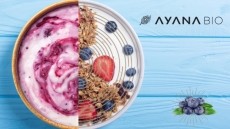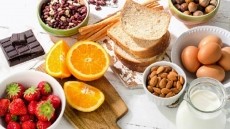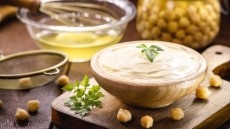Most fruit products targeting kids are misleading, claims study
beverage products that clearly feature fruit on their packaging
contain no fruit at all, according to a study released last week.
The findings add more weight to a mounting campaign to prevent misleading claims or associations on food packaging.
According to the Prevention Institute, a non profit center that aims to improve public health, 51 percent of the products included in its recent study were found not to contain any fruit, while a further 16 percent contained "minimal" amounts of fruit despite prominent fruit promotions of the packaging.
"The packages might lead a parent to believe (these products) are a healthier option for their children, when many do not actually deliver any of the nutritional benefits of whole fruit," wrote the authors of the study.
"Parents deserve - and public health imperatives require - packaging that does not mislead consumers into thinking they are making healthy choices," they added.
For the purposes of the study, the Prevention Institute used the list of brands included in the Kaiser Family Foundation's recent report It's Child's Play: Advergaming and the Online Marketing of Food to Children. This had identified almost 100 brands as the top spending children's food advertisers on television.
Out of these, around a quarter were eliminated as they clearly did not contain fruit, while just over 30 were also removed as they made no allusions to fruit on their packaging. The remaining 37 products were the focus of the study.
These were divided into four categories based on the type of fruit they contained. A total of ten products, or 27 percent, fell into the 'fruit' category, which included products that contained real fruit or fruit from concentrate. Brands in this category included Apple Cinnamon Cheerios, Kellogg's Strawberry Pop Tarts and Quaker Chewy 90 calorie Baked Apple Granola Bars.
The second category contained '100% fruit juice', and contained only two products: Capri Sun Grape Fruit Waves and Juicy Fruit.
The third group of products - 'minimal fruit juice' - included drinks containing 2-10 percent fruit juice. Making up 16 percent of the total, this category included items such as Sunny Delight Fruit Drinks, Capri Sun Strawberry Juice Drink and Hi-C Strawberry Fruit Drinks.
The final and largest 'no fruit' category consisted of more than half of the products in the study, and included items with no fruit, with only natural fruit flavors - which have no nutritional value - or fruit juice concentrate - which is classifies as an added sweetener, according to the study's authors.
This group contained products such as Nestle's strawberry Nesquick Milk and Drink Mix, Berry Berry Kix cereal, Dannon Danimals XL strawberry products and Yoplait Go-Gurt strawberry yogurt.
According to the Prevention Institute, many of the foods in the study - including those in the 'no fruit' category - had brightly colored packages containing images of fruits or words related to fruit, such as "fruit", "fruity" , or the name of fruits, such as "strawberry" or "wild cherry" .
"These products were making an allusion rather than a claim, which is why they are allowed under current regulatory guidelines. But the packages imply to the average consumer that the products are healthy, when they often are not," lead author of the study Leslie Mikkelsen told FoodNavigator-USA.com.
The report suggests several steps that need to be taken to prevent misleading marketing: manufacturers must remove misleading statements and images from their products, advertisements of highly sweetened foods and beverages to children must be discontinued, and existing products should be reformulated to increase fruit content and reduce sweetener content.
The report also stresses the need for more stringent regulatory guidelines that would prevent misleading claims or images on food packs.
The number of products specifically targeting children has shot up in recent years, as food and beverage firms attempt to capitalize on a growing kids' purchasing power.
Indeed, an estimated $10bn per year is spent on food and beverage marketing to children in the US, according to a report issued last year by the Institute of Medicine (IOM). And the majority of these products are high in sugar, salt, fat and calories, and low in nutrients, said the report.
But the marketing opportunity does not come without its fair share of costs. The growing body of goods aimed at kids has coincided with a surge in childhood obesity rates. As a result, manufacturers are increasingly finding themselves targeted as contributors to the national epidemic through marketing unhealthy products to children, or misleading parents into thinking products are healthier than they actually are.
Such claims have resulted in a flurry of legal activity in recent years, which shows no sign of letting up, and which suggests that the industry must start to rethink certain marketing practices if it is to avoid costly and time-consuming consequences in the near future.

















